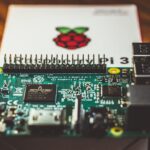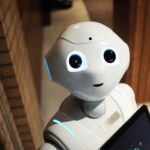
Course Length: 10-15 hours
Description
In this interdisciplinary STEAM unit, we will focus on innovation in sustainable energy. Students will explore the theme, taking an in-depth look into key issues related to energy and sustainability. Students will then design and build a product (prototype, application, service…) that provides an innovative and sustainable solution to an energy-related problem they identify.
STEAM Year 9 – Energy and Sustainability
Unit Plan
In this interdisciplinary STEAM project, we will focus on innovation in sustainable energy. Students will explore the theme while taking in-depth research about key issues related to energy and sustainability. Students will then design and build a product (prototype, application, service...) that provides an innovative and sustainable solution to an energy-related problem they identify.
Resources and Materials
For this unit, students will need the following
- Internet Access
- Raspberry Pi
- PiJuice Solar
- Screwdriver, Phillips
- Arduino Uno
- STEAM Year 9 - Energy and Sustainability on the AI Quintessential platform that can be accessed via any laptop, desktop, iPad or tablet.
Unit Outcomes |
|
1. Develop an understanding of the process of scientific inquiry (Science) 2. Understand fractions and visualise them (Mathematics) 3. Represent data in a variety of ways including text, sounds, pictures and numbers (Mathematics) 4. Demonstrate interpersonal skills, including those of communication and co-operation (English) 5. Identify problems and design innovative solutions (All subjects) 6. Demonstrate an understanding of the problem and form a problem statement (English) 7. Define the term "problem" in the context of innovative solutions (English) 8. Identify a problem and develop a clear problem statement (All Subjects) 9. Develop a clear statement of the driving question (i.e. what the students should work on to find a solution for the identified problem) 10. Generate ideas to solve a problem 11. Research a range of existing ideas which provide a potential solution for the problem, and use the information collected to generate creativity in the innovation process. 12. Design and build a prototype to solve the identified problem. |
Practical Experiments
-
Make Your Pi Solar-Powered
- Make your Solar Power Arduino Tracker
STEAM Project Skills Per Subject
Languages and Humanity
- Deploy teamwork and leadership skills to support innovation.
- Demonstrate the capacity to collaborate with others
- Demonstrate interpersonal skills, including those of communication and
co-operation - Exemplify positive and meaningful relationships with peers, leaders, and community members
- Communicate and evaluate information related to the innovation process.
- Write informative reports and deliver presentations about innovation processes
- Demonstrate the capacity to produce a written report on one or more aspects of an innovation process
- Demonstrate the capacity to deliver a verbal presentation to an audience on one or more aspects of an innovation process
Science
- Plan and carry out investigations to support the innovation process.
- Develop an understanding of the process of scientific inquiry
- Formulate empirically answerable questions about phenomena, establish what is already known, and determine what questions have yet to be answered satisfactorily
- Ask questions that can be answered through investigations
- Design scientific and technical investigations
- Present, analyze and interpret data to answer a question or design a solution
- Analyze, interpret and communicate data using graphs.
- State the probability of whether a hypothesis is accepted or not accepted
Maths
- Apply aspects of mathematics and computational thinking which support the innovation process.
- Represent data through abstractions, for example, models and simulations
- Represent data in a variety of ways including text, sounds, pictures and numbers
- Use visual representations of problem states, structures and data (for example, graphs, charts, network diagrams, and flowcharts)
- Depict and organize data in tables, charts and diagram formats
Engineering
- Design, develop and demonstrate a prototype
- Demonstrate traditional and digital design sketching techniques
- Design a product or simulation based on the scientific principle, requirements and constraints found in the research
Computing
- Design an algorithm to solve a certain problem
- Write a code to program hardware components
- Debug and troubleshoot codes
- Test and deploy codes







